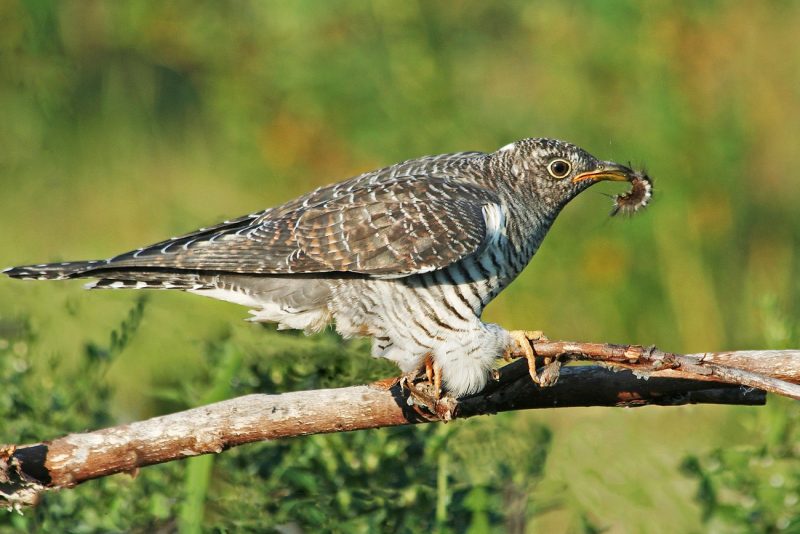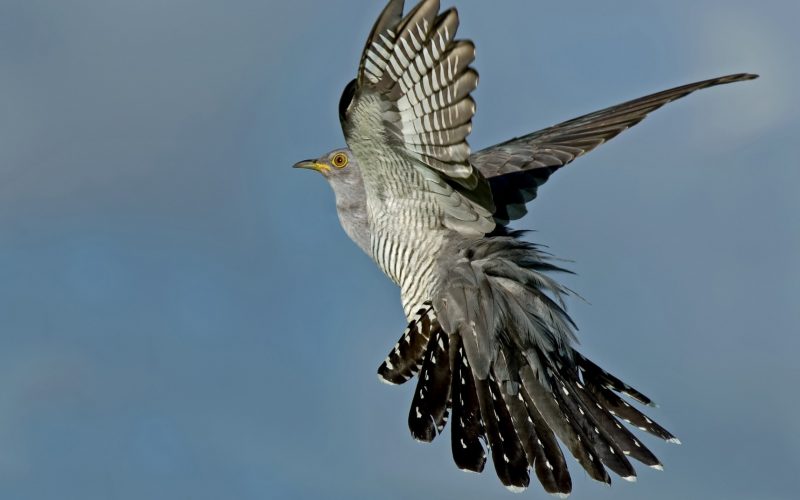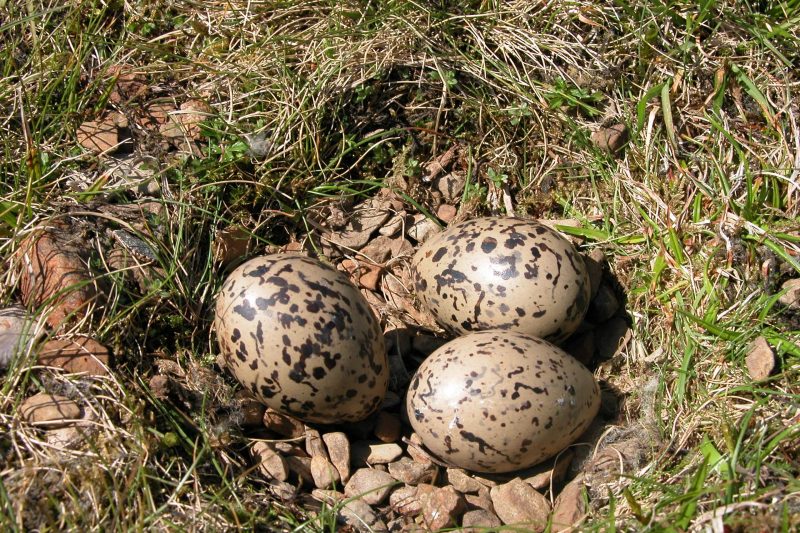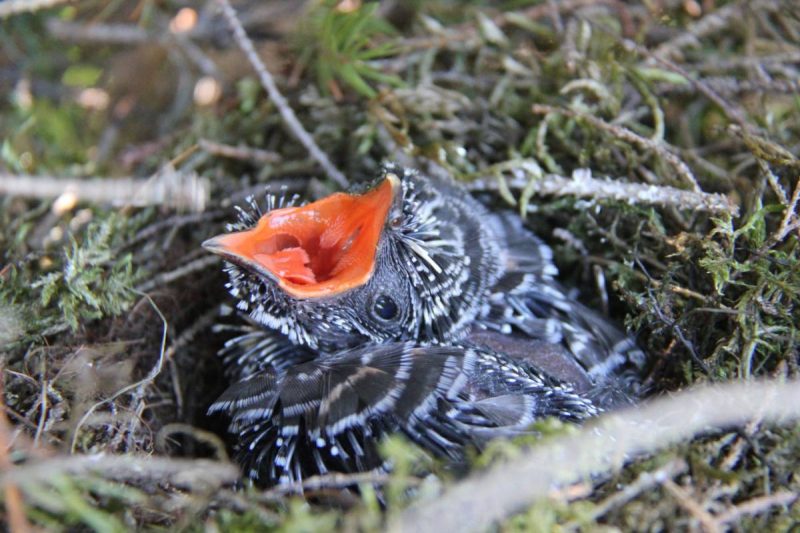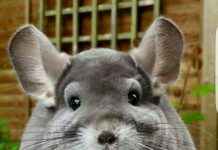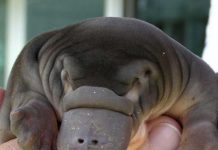Inconspicuous cuckoos have long been of interest, and even perplexity among people. It seems strange that these birds lack a parental instinct. Why does a cuckoo toss eggs into other people's nests and does not take care of further raising offspring?
Material Content:
Description and varieties of cuckoo
According to the observations of ornithologists, more than 150 species of birds of the Cuckoo family live in various parts of the planet.
The most common representatives of these birds are:
- Californian running cuckoo;
- common cuckoo;
- Spur Cuckoo (Indian Kukal);
- red-bellied shrub cuckoo;
- Asian Koel;
- ani cuckoos;
- emerald bronze cuckoo.
The body sizes of these birds are different - from 20 to 70 cm. The average size of most of them is 40 cm, weight - 100-200 g.
It is interesting! The largest cuckoo, also called gigantic, weighs approximately 900 g.
The cuckoo's beak is medium in size and has smooth edges, slightly curved to the bottom. The eyes can have different shades: brown, yellow, hazel, brown. Some species carry a crest on their heads. The body of the birds is thin, the tail is long. Its length, as a rule, does not exceed the size of the wings. The latter are most often long and sharp, but in some birds they are weak and short.
A cuckoo is a short-legged bird and its limbs are colored red, yellow or orange. Toes are arranged in pairs 1 and 4 - back, 2 and 3 - forward (although sometimes the last fourth finger also looks forward).
Cuckoos are equipped with rigid plumage, there is very little fluff in it. Color can be red, brown, whitish, gray, etc.As a rule, the body of the bird is darker from above, and in the area of the abdomen and tail it is lighter or even white. Often the feathers are not monophonic, but have speckles and even stripes.
Lifestyle, Nutrition and Behavior
Cuckoos are extremely mobile birds that can fly fast. These birds are migratory and come wintering in South Africa. Males fly first, after 2 weeks - females. Interestingly, in the last few hundred kilometers they fly alone. Some of these birds fly to warmer climes in mid-summer. Young growth of the first year of life remains at home until about September. They can travel abroad in small groups, but never in a pack.
Cuckoo is a loud and gluttonous creature. The most avid workaholics will envy these birds: they are constantly on the move and sleep very little. Some varieties of these birds travel mostly on the ground than on the air.
By the nature of their cuckoo, loners, all their lives preoccupied with the search for food. They come into contact with their own kind only when pairing is necessary.
It is interesting! Cuckoo is a master of disguise. It can often be heard in the forests and fields by a distinct “cuckoo,” but not everyone can track an inconspicuous small bird sitting on tree branches. By the way, having heard such sounds, we can confidently say that the male sings, the female’s voice is more like laughter. The male can continue to cook up to 350 times in a row.
Why doesn’t the bird incubate and feed the chicks herself?
Throwing eggs into alien nests (nesting parasitism) has long become a kind of legend that distinguishes gray inconspicuous birds from other birds. This common concept - “cuckoo” - is also called negligent human mothers who do not burden themselves with worries about their offspring. But few people know that in fact, not all cuckoos do this with their eggs. Only one third of the total number of species of these birds is capable of giving their children to be raised by their brethren. All the rest are exemplary mothers, build nests, hatch eggs and can hatch chicks, like the rest.
But such approximate cuckoos in Russia are unlikely to be found. In the vastness of our homeland live 5 species of these birds, and all of them are nesting parasites.
Ornithologists have not reached a consensus on the question of why this or that cuckoo lays eggs in other people's bird houses. The most understandable is the version about the impossibility of these birds to feed offspring on their own. During the season, one female is able to lay up to 15 eggs. But the bird's body is designed in such a way that it is not able to form several eggs at the same time. If the bird produces them one at a time, it simply will not be able to feed the already hatched chicks, since their fragile wings will be liable to sit on the remaining the eggs. Perhaps that is why this species of birds facilitates their life by throwing eggs in other people's bird houses.
As a cuckoo throws eggs into other people's nests
From the outside it may seem that cuckoos randomly choose a place for tossing their eggs. In fact, these birds spend most of the spring and part of the summer tracking other birds. This is necessary in order to track the location of the nest and have time to lay the egg. Thus, we can conclude that the cuckoo attaches future children to reliable bird families. Potential guardians of cuckoos can become more than 20 species of birds: larks, wagtails, swifts, waders and others. There is an opinion that cuckoos are more likely to throw eggs in the nests of those species of birds among which they grew.
But the potential victims are not so simple. They are not eager to help woe-mothers. Other birds often identify foreign eggs and throw them out of the nest. To prevent this, the cuckoo embarks on a trick.Most birds can count and remember very well how many eggs remained in the nest before they left the house. An uninvited guest arriving in the absence of the hosts nests throws or eats one egg and lays its own in return. If the nest is open, the bird simply blows the egg into it, if it is closed, it brings the finished egg in its beak and throws it into the new house. She manages to carry out her cunning plan in a matter of seconds.
It is interesting! The color of the shell of cuckoo eggs can be varied - gray, golden, blue, covered with specks or dots. Scientists still can not explain the mysterious feature of these birds - the ability to lay eggs, outwardly resembling those that potential adoptive parents of cuckoos laid in their nest. Therefore, birds do not always distinguish a planted egg from their own.
The cuckoo hatches after 14 days after the start of incubation, and all other birds - after 3 or more weeks. A foundling from the first minutes of life requires special attention. These babies have an indefatigable appetite, and unhappy parents are exhausted, trying to feed the foundling. In the evening, tired birds can even get scolded by an arrogant child: pushing them out of the nest with their feet, he shrieks piercingly, demanding food that he can eat up to 300 times a day.
Some cuckoos, having thrown an egg, completely forget about it. Others patiently wait for their children to hatch from eggs, and subsequently help foster parents to feed the hatched baby.
It is interesting! According to estimates by ornithologists, about 10% of bird offspring die due to the fault of small cuckoos - some of them simply throw eggs and other chicks from the nest. It is believed that the same number of small birds dies for other reasons, including diseases, predators, natural phenomena, etc. However, cuckoos have one significant advantage, thanks to which these insectivorous birds can forgive not quite noble habits. They easily peck and digest poisonous caterpillars whose protective spiky hairs are not perceived by the stomach of other birds. Cuckoos are able to clean their digestive tract from lumps of wool, simultaneously freeing the forest from pests.
So, most cuckoos are not nesting parasites at all, as rumor ascribes to them. And those who still throw eggs to other birds, still take care of the children in their own way, after looking for them with responsible parents. These creatures compensate for the lack of maternal instinct with their vigorous activity as forest orderlies.


